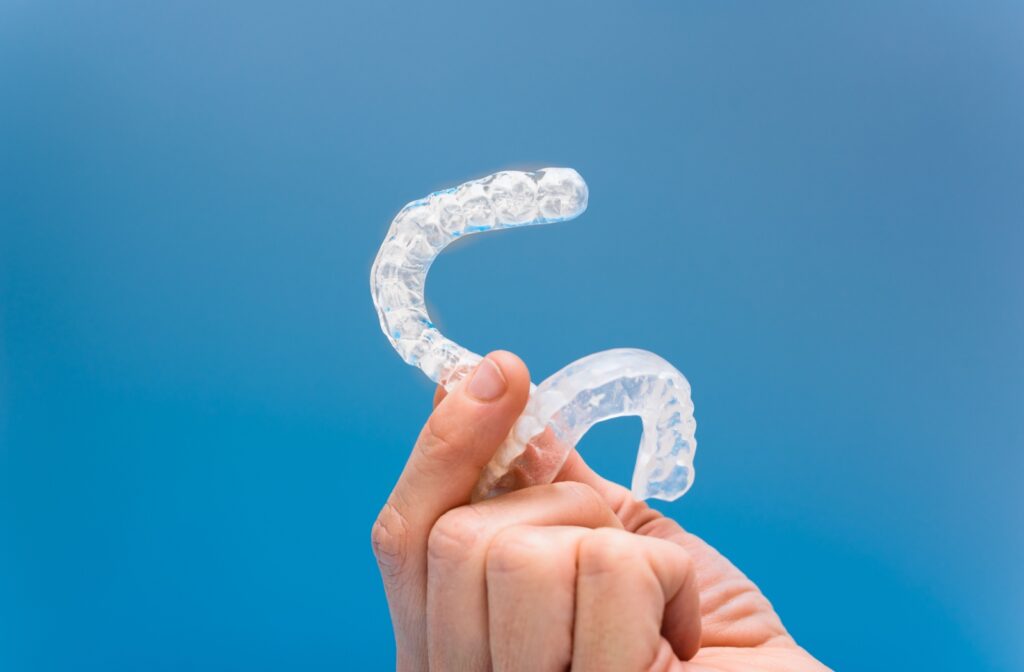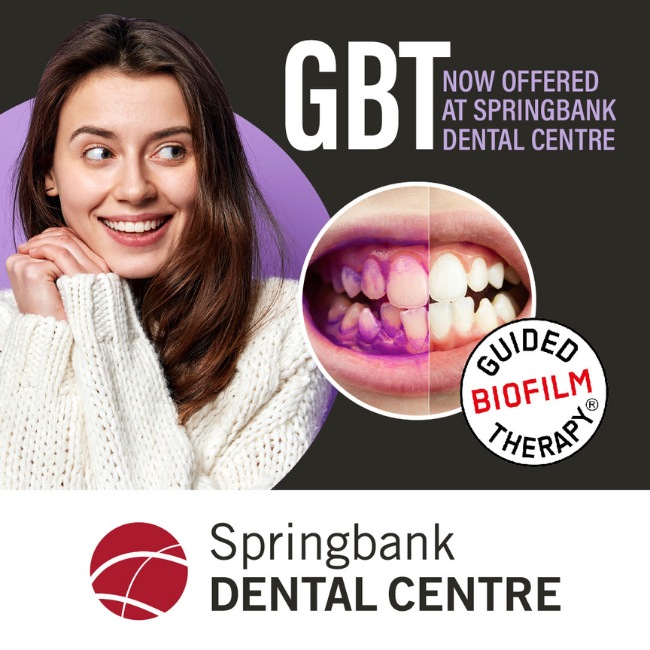Your jaw might be the reason you experience persistent headaches with no clear cause. Many people are surprised to learn that pain in the jaw joint—known as the temporomandibular joint (TMJ)—can trigger headaches.
TMJ-related headaches are more common than you might think and often go undiagnosed. Understanding the connection between TMJ disorders (TMDs) and headaches can help you find lasting relief.
Your dentist is trained to diagnose and manage TMJ disorders, and they can work with you to develop a treatment plan that targets the root of the problem. For many, this means fewer headaches, reduced jaw pain, and an improved quality of life.
What Is a TMJ Headache?
The temporomandibular joint is located on each side of your head, connecting your jawbone to your skull. It acts like a hinge, enabling you to speak, chew, and yawn. This complex joint relies on several muscles, ligaments, and bones to function smoothly.
But when something disrupts that harmony—tension, inflammation, or structural misalignment—it can cause pain radiating through your jaw, temples, neck, and even your shoulders.
TMJ headaches often mimic tension headaches or migraines. You might feel pressure around your temples, aching pain behind your eyes, or discomfort that worsens when chewing or talking.
Unlike general headaches, you’ll typically experience jaw-related symptoms if it’s a TMJ headache, which can help pinpoint the cause.
Common Signs of a TMJ Disorder
While headaches are a telltale sign of a TMJ problem, they usually don’t appear alone. You might notice:
- Pain or tenderness in the jaw, face, or neck
- A clicking or popping sound with movement
- Limited ability to open your mouth wide
- Jaw stiffness, especially in the morning
- Earaches or a feeling of fullness in the ears
- Changes in how your teeth fit together
If you experience any of these symptoms along with regular headaches, a TMJ disorder could be to blame.
What Causes TMJ Headaches?
Several underlying issues can lead to TMD. However, the most common triggers include:
- Teeth grinding (bruxism) can add excessive pressure to jaw muscles & joints, leading to inflammation & discomfort
- Jaw injury or trauma to the face or jaw can misalign the joint or strain muscles
- Arthritis & degenerative joint diseases like osteoarthritis can affect the TMJ, causing inflammation & joint degradation
- Chronic stress can lead to muscle tension & habitual clenching of the jaw.
- Poor posture, especially related to the neck or shoulders, can impact jaw alignment & strain supporting muscles
It’s important to understand that TMJ discomfort doesn’t have a one-size-fits-all cause. That’s why working with a dentist trained in diagnosing TMDs is essential to get appropriate care.
The Link Between Bruxism & Headaches
Bruxism is one of the most common—and most overlooked—causes of TMJ headaches. Many people clench or grind their teeth in their sleep without even realizing it.
The constant pressure can fatigue your jaw muscles and irritate the TMJ, eventually leading to chronic pain and headaches. Studies show that sleep bruxism affects around 8–12% of Canadian adults. Children and teens are even more likely to grind their teeth, with up to 20% affected.
Because it happens at night, the signs often go unnoticed until symptoms such as worn teeth, jaw pain, or morning headaches appear.

How Can a Dentist Help?
Dentists play a vital role in diagnosing and treating TMJ disorders. Through a combination of physical exams, imaging, and an understanding of your symptoms, your dentist can determine whether your headaches are related to TMJ dysfunction.
Once your dentist has diagnosed you with TMD, there are several treatment options you can explore. Your dentist can recommend a personalized approach based on your symptoms, health, and lifestyle.
Custom Mouthguards or Splints
A custom-made mouthguard (an occlusal splint) can reduce the pressure on your TMJ by preventing the upper and lower teeth from making direct contact. The appliance is especially useful for managing bruxism, as it helps protect your teeth and relax jaw muscles during sleep.
Injectables
In some cases, your dentist may recommend botulinum toxin (Botox) injections to help manage TMJ-related pain. These injections can target specific jaw muscles to help reduce tension and involuntary clenching.
By temporarily relaxing the overactive muscles, botulinum toxin can relieve headaches and jaw discomfort caused by TMD, especially when bruxism or muscle overuse is a contributing factor.
Lifestyle Adjustments
In many cases, small changes can make a big difference. Avoiding hard or chewy foods, practicing good posture, and managing stress can help relieve TMJ pain. Mindfulness techniques, such as yoga or meditation, may also reduce jaw clenching caused by stress or anxiety.
Therapy & Supportive Care
Depending on your symptoms, your dentist might recommend working with a physiotherapist, chiropractor, or behavioural therapist.
These professionals can offer exercises and guidance to improve joint mobility, reduce muscle tension, and improve sleep quality—all of which support TMJ relief.
Surgical Interventions (Only When Necessary)
When conservative and noninvasive treatments don’t work in rare cases, you may consider surgical options. These range from minor procedures to correct joint alignment to more complex surgery for severe joint damage.
However, most healthcare providers consider surgery for TMD as a last resort after all other options have been exhausted.
Find Relief from TMJ Headaches
If you’ve been struggling with persistent headaches and suspect your jaw might be causing discomfort or restricting how you function, don’t wait to seek help. TMJ disorders are treatable, and relief is possible with the right care and support.
At Springbank Dental Centre, our team offers TMJ treatment to help you manage jaw pain and related headaches. Book a consultation with us today to learn how we can help you find comfort and clarity, starting with your smile.




